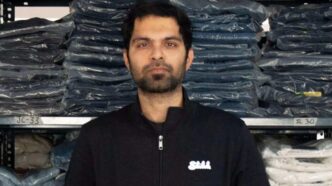Bengaluru-based ecommerce startup Slikk has raised $10 million in a Series A funding round led by Nexus Venture Partners, with continued support from Lightspeed. The funding marks a major milestone for the company as it aims to redefine fashion quick commerce in India—an emerging segment blending speed, style, and tech-driven convenience.
Founded by Akshay Gulati, Om Prakash Swami, and Bipin Singh, Slikk delivers fashion items within 60 minutes, offering an app-based Try & Buy model with instant refunds. Its core audience—college students and urban professionals—represents India’s digitally native Gen Z and millennial shoppers who prioritize speed, flexibility, and a tactile shopping experience even in online channels.
With this new capital, the company plans to expand into beauty, footwear, and accessories, while also introducing instant returns and increasing its urban footprint.
Blending Fashion and Speed: A New Category Emerges
While quick commerce in India has traditionally been dominated by groceries and daily essentials through platforms like Blinkit and Zepto, Slikk is taking a different path—applying the model to lifestyle and fashion. Still in its early stages, Slikk averages around 100 deliveries daily in select Bengaluru zones, but the addressable market is massive.
India’s fashion ecommerce industry is expected to grow from $21.6 billion in 2025 to $98.45 billion by 2032, and quick commerce overall is projected to top $160 billion by 2025. Slikk’s model stands at the crossroads of these two booming sectors.
However, unlike grocery, fashion poses unique logistical hurdles: greater SKU variety, frequent returns, and the need for personalized fit. Slikk’s dark store model helps tackle these complexities by maintaining local inventory close to the consumer, enabling rapid fulfillment without compromising on product range.
Winning Gen Z with Experiential Shopping and D2C Brands
Slikk’s success so far is rooted in its understanding of Gen Z’s online shopping behaviors. This generation craves instant gratification and is heavily influenced by social media, with over 60% making purchases based on online trends. Slikk delivers not just speed, but experience—its Try & Buy offering reduces friction and builds trust by mimicking the fitting room convenience of offline retail.
The platform also focuses on curated selections from lesser-known direct-to-consumer (D2C) brands, differentiating itself from legacy players like Myntra or Amazon. Its AI-driven personalization ensures relevance while its limited SKU strategy maintains tight inventory control—a crucial factor in quick commerce where unit economics are fragile.
Slikk’s move into beauty and personal care is also timely. With consumer spending in this category outpacing fashion in terms of margins and frequency, the expansion allows Slikk to drive repeat purchases and increase average order values. It’s a smart play to deepen customer relationships while spreading fixed delivery costs across higher-margin products.
Scaling in a Competitive but Expanding Market
Despite the promise, Slikk faces intense competition. Blinkit and Zepto are rumored to be testing fashion delivery pilots, and legacy platforms like Flipkart and Myntra already dominate logistics and brand relationships. On top of this, India’s ecommerce infrastructure still grapples with widespread cash-on-delivery habits, which account for 75% of all transactions and can complicate quick refunds and returns.
Still, Slikk’s positioning as a youth-centric, experience-first platform may give it an edge. By operating at the intersection of ecommerce, logistics innovation, and youth culture, Slikk is crafting a distinctive identity in a crowded market.
The $10 million infusion will test whether its model can scale across new Indian cities while sustaining operational efficiency. If it succeeds, Slikk may prove that fashion quick commerce isn’t just viable—it’s the next frontier in India’s ecommerce evolution.













